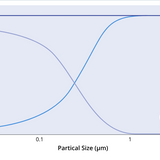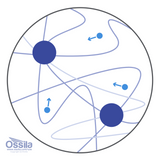Replacing Your Laminar Flow Hood Filter

Clean air environments are required in many areas of research. A laminar flow hood plays a crucial role in creating these environments, relying on high performance filters to remove particles from the air before it flows through the workspace. Laminar flow hoods use pre-filters and high efficiency particulate air (HEPA) filters to create an environment with very low levels of contamination. It is important to know when and how to replace these filters, without risking contamination to the environment.
Laminar Flow Hood Filters
Laminar flow hoods usually use two filters to purify air. Firstly, air passes through a pre-filter, which removes larger particles like dust. This pre-filter helps increase the lifespan of the high-performance filter and reduces maintenance costs.
Next, the air passes through a HEPA filter or a ultra-low particulate air (ULPA) filter. These filters contain a dense network of fibers which capture the smallest particles in the air. At its lowest efficiency, a HEPA filter will filter out 99.97% of 0.3 µm particle size. Flow hoods need these high-performance filters to create and maintain a contaminant-free environment.
It is important to select filters that are the correct size for the laminar flow hood panels. The filters should cover the entire inflow area of the hood to create a tight seal. This ensures that all incoming air passes through the filter, maximizing its efficiency.
By using a combination of pre-filters and HEPA or ULPA filters, laminar flow hoods can reliably remove almost all physical contaminants from incoming air.
Replacing the Filter
When to Replace Your HEPA Filter
In general, you should change the filter if it becomes saturated, contaminated, or irreversibly damaged. The frequency for replacing your filter depends on several factors:
- How often you use the hood
- The type of work you conduct in the hood
- The level of cleanliness is necessary for your work
Most manufacturers recommend that HEPA filters are changed every 1-3 years, if used with a pre-filter. Pre-filters can be changed more regularly to prevent dust build up (every 6 months depending on usage).
Our laminar flow hood has advanced software which shows you current filter saturation data. The software measures filter saturation compared to the original back pressure. For example, if the original back pressure is 100pa then, after a few months, the measured back pressure is 135pa. At that time, the calculated filter saturation level is 35%. This feature means you can easily see when your filter has reached its saturation point.
How to Replace Your HEPA Filter
Changing the filters in an Ossila laminar flow hood is quick and easy.
Appropriate personal protective equipment (PPE) should be worn when replacing the filter. The exact PPE you need will depend on the type of work that is done in the laminar flow hood. At a minimum, we would recommend wearing gloves, goggles, a lab coat, and a dust mask (if necessary).
The HEPA filter can be replaced in several easy steps:
- To remove the old filter, loosen the clamp screws all the way out and move the old filter out of the plenum.
- Dispose of the used HEPA filter appropriately. For most applications, HEPA filters can go into normal disposable waste bins. If you think the filter has been contaminated with dangerous material, use the correct hazardous waste stream.
- Insert the new HEPA filter, ensuring the arrow on the filter is pointing in the direction of air flow. This will be downwards in a vertical laminar flow hood, and towards the front of the cabinet in a horizontal laminar flow hood. Avoid touching the HEPA filter while inserting.
- Make sure that the gasket lined frame aligns with the clamp screws. Fix in place using the clamp screws attached to the plenum. Ensure a tight seal is formed between the filter panel and the internal space.
- Once you are happy with the positioning of the filter, screw the filter access panel back in place.
After replacing the filter, select the "Reset Filter" option in the settings menu. You can navigate to the settings pages from the main display, using the left and right navigation buttons. Once selected, the laminar flow hood will automatically run through a series of tests to measure back pressure and save the new pressure values.
Filter saturation is calculated by measuring back pressure and comparing that to this initial back pressure measurement (when the filter is first installed). For this reason, it is important to reset the filter after replacing.
Laminar Flow Hood

Learn More
 HEPA Filter Size Chart
HEPA Filter Size Chart
High Efficiency Particulate Air (HEPA) filters are designed to efficiently remove airborne particles and contaminants, making them indispensable tools in laboratories and cleanroom facilities.
Read more... ULPA vs HEPA Filters: Which One is Right for You?
ULPA vs HEPA Filters: Which One is Right for You?
Ultra-Low Particulate Air (ULPA) and High-Efficiency Particulate Air (HEPA) filters are both used in laminar flow hoods to remove particles from incoming air.
Read more...